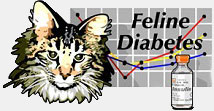-
Attaching files issues? See this message
increasing dose but can't lower BG
Discussion in 'Feline Health - (Welcome & Main Forum)' started by dbdb, Jun 14, 2013.
- Thread Status:
- Not open for further replies.
- Thread Status:
- Not open for further replies.
